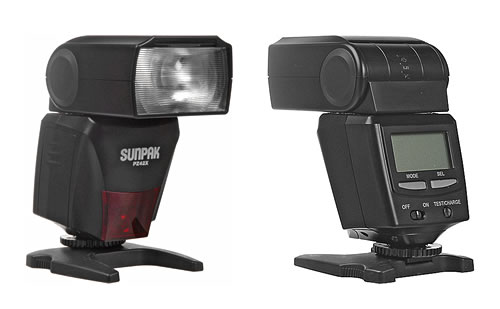A good number of first time DSLR buyers used to own film SLRs with a dedicated hotshoe flash. Most flash guns built during the film SLR days cannot take advantage of the various advancements in flash photography like Nikon’s CLS (Creative Lighting System) and Canon’s ETTL (Evaluative Through-The-Lens) and ETTL-II. However, a more important (and potentially dangerous) note is that most old flashes have extremely high trigger voltages. The electronics in digital SLRs like the Canon EOS 400D/Rebel XTi can be destroyed by old flash guns with these high trigger voltages. This article explains this issue quite well:
Why Are Newer Cameras in Danger, but not Old Ones?
Once upon a time, all camera shutters were triggered mechanically. The flash switches were mechanical switches, made of metal. Cameras from the 1950’s-70’s even have two different flash settings, each with minutely different timings: “X” for strobes, and “M” for flashbulbs (which needed an extra 1/250th of a second or so to ignite).
Modern electronically-controlled cameras use a thyristor capacitor, a solid-state device that switches according to voltage potentials. It switches on and off much more quickly than mechanical switches, making it excellent for electronic control, especially of short durations. But it’s also susceptible to problems that weren’t present in the previous generations of cameras.
So how do you prevent yourself from ruining your 800 dollar camera? This comprehensive listing of flash trigger voltages over at botzilla.com (from the same source as the previous link) will help you identify problem strobes and flashes. Just identify the flash you’re using and check its details in the table provided; it also contains specific notes from fellow users with first–hand experience with specific models of flashes.
This information can be very helpful for people experimenting with flash photography, especially now that it’s on the rise and greatly inspired by the strobist blog.

